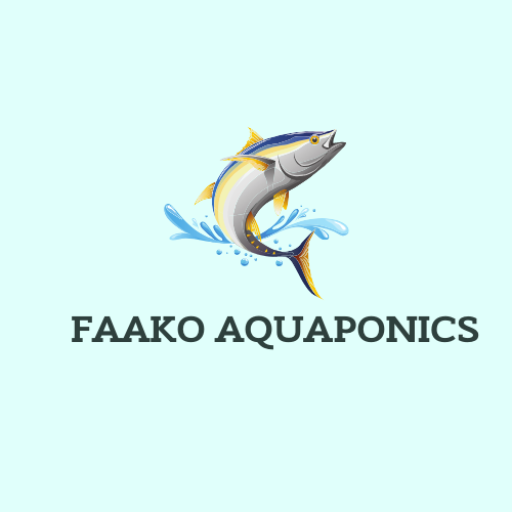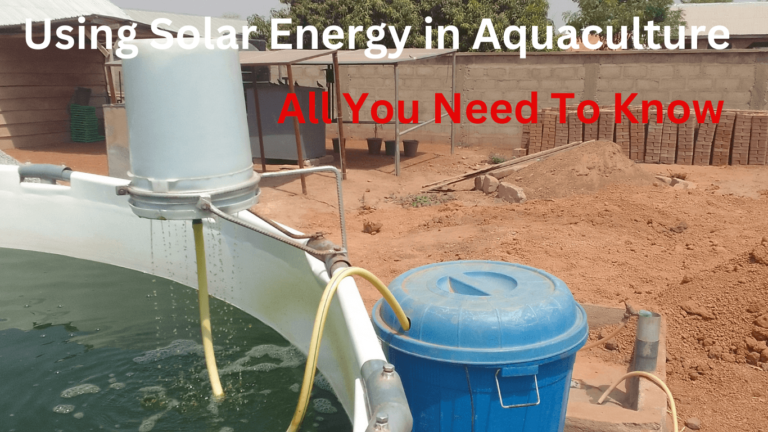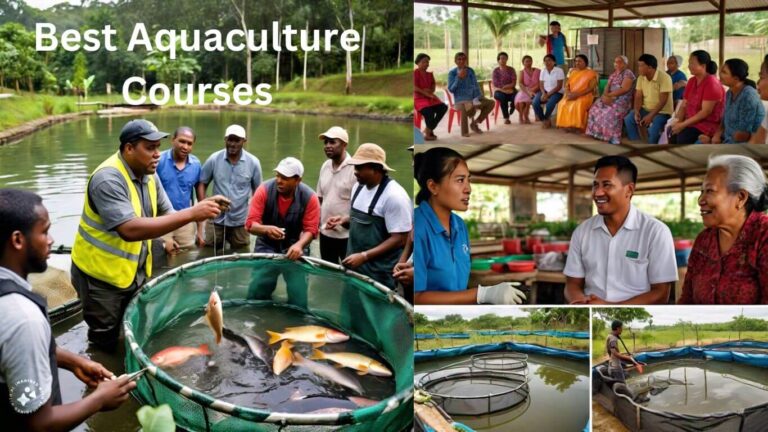Using Solar Energy in Aquaculture is one of the modern fish farming practices that has evolved significantly over the years. Traditional methods have given way to more advanced techniques, incorporating various technologies to improve efficiency and sustainability.
This not only reduces operational costs but also lessens the environmental impact of fish farming.
Follow me as I take you through everything you need to know about using solar energy in aquaculture.
The Basics of Solar Energy in Aquaculture
Solar energy in aquaculture involves harnessing the sun’s power to provide energy for various operations within a fish farm. This includes powering pumps, aerators, feeders, and other equipment essential for maintaining a healthy and productive aquaculture system.
The concept is straightforward: solar panels capture sunlight, convert it into electricity, and store it in batteries for use when needed.
Importance Of Using Solar Energy in Aquaculture
1. Cost Savings
One of the most significant benefits of using solar energy in aquaculture is the reduction in electricity costs. Traditional fish farming operations can rack up substantial electricity bills, especially when running 24/7. Solar energy can dramatically cut these costs.
2. Environmental Impact
Solar energy is clean and renewable. By reducing reliance on fossil fuels, fish farms can lower their carbon footprint, contributing to environmental sustainability.
Unlike generators where fossil fuels are burnt and release carbon into the environment, solar is free from that. With solar energy in fish farming, we can contribute to fighting the current global warming due to climate change.
3. Energy Independence
Solar power provides energy independence. Fish farms, especially those in remote areas, can operate without relying on the grid, reducing the risk of power outages disrupting operations.
In places that are not connected to the national grid, using solar energy in fish farming is the best practice.
4. Longevity and Reliability
Solar panels are durable and have a long lifespan, often lasting 25 years or more. This reliability ensures a consistent energy supply, which is crucial for continuous fish farming operations.
Key Components of a Solar-Powered Aquaculture System
1. Solar Panels
The heart of the system, solar panels convert sunlight into electricity. The number and size of panels required will depend on the energy needs of the fish farm.
For instance, in my fish farm, we first used two panels and one battery but it was not able to provide 24/7 electricity and we had to add additional panels and batteries. Find out more in subsequent sections of this post.
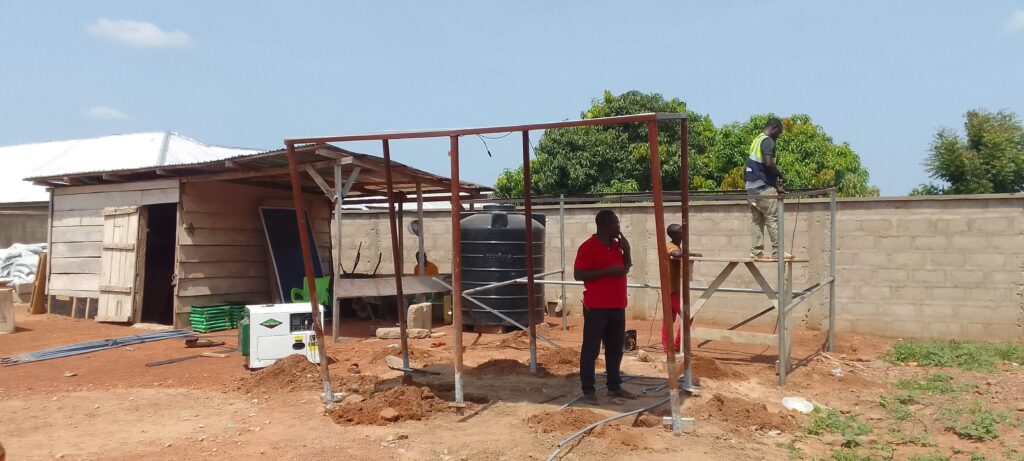
Installing Solar Panels
2. Inverters
The solar inverter is a device that converts the direct current (DC) generated by solar panels into alternating current (AC) used by most farm equipment. It also comes with different capacities and you should consult an expert for the best one as required by your fish farm.
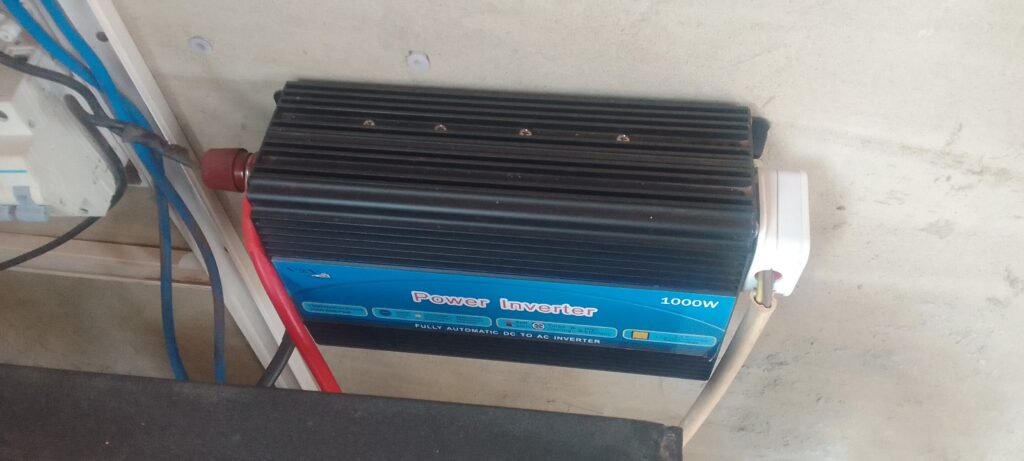
Solar Invertors
3. Batteries
Essential for storing energy, batteries ensure that power is available even when the sun isn’t shining, such as during the night or on cloudy days. In my fish farm, I used a direct panel to pump water from our borehole. The challenge is that we only get water when there is sun and store it in poly tanks. It means, that in a situation where you need 24/7 electricity to power, you must get a battery for storage. For instance, we have batteries for our Recirculating Aquaculture System (RAS)
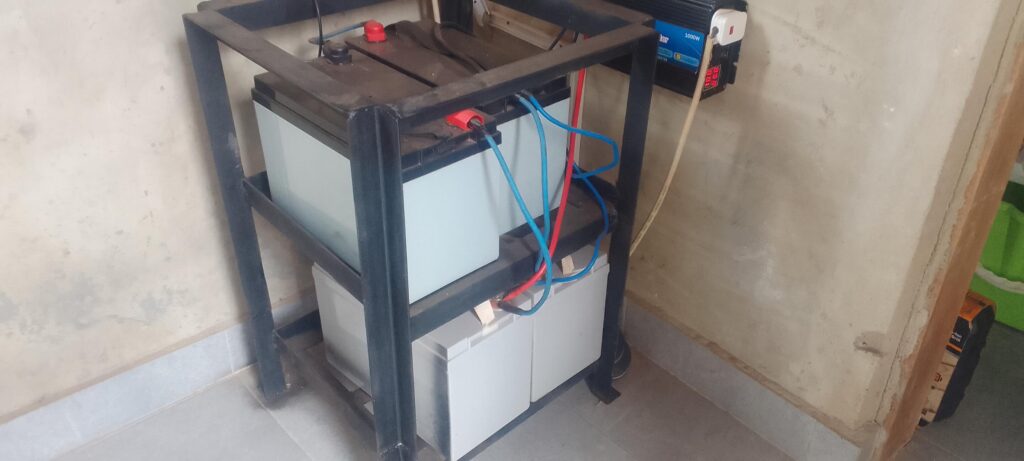
Solar Batteries
4. Charge Controllers
The Charger Controller regulates the power going into the batteries to prevent overcharging and prolong battery life.

Solar Charger Controller
5. Monitoring Systems
Advanced monitoring systems help track energy production and consumption, ensuring the system operates efficiently.
Implementing Solar Energy in Aquaculture
1. Assessing Energy Needs
The first step is to determine the farm’s energy requirements. This includes calculating the power needed for pumps, aerators, lighting, feeders, and any other equipment.
2. Designing the System
Once energy needs are assessed, a solar energy system can be designed to meet those requirements. This involves selecting the appropriate number and type of solar panels, inverters, batteries, and other components.
3. Installation
Installing a solar energy system in aquaculture requires professional expertise to ensure it’s set up correctly and safely. This includes mounting solar panels, wiring components, and integrating the system with existing farm operations.
Experienced they say is the best teacher. When we were setting up our solar system, we first brought an expert who gave us an estimation and did the installation. Unfortunately, we could not get power for 24 hours and had to contact another company who did it for us and it has been working without any issue for a year now.
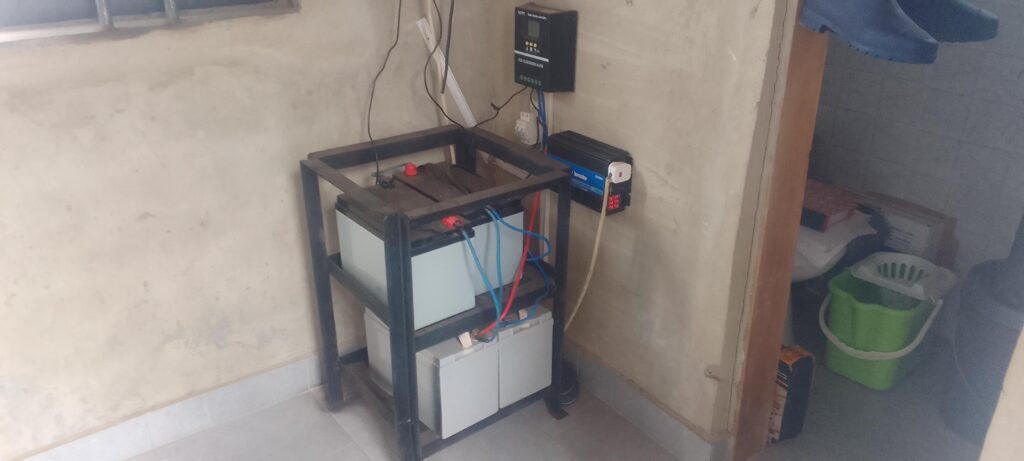
Solar System Set Up
4. Maintenance
While solar energy systems are generally low-maintenance, regular checks and cleaning of solar panels are necessary to maintain efficiency. Batteries also require periodic inspections to ensure they are functioning correctly.
Benefits Beyond Cost Savings
1. Improved Water Quality
Using solar energy in aquaculture can enhance water quality. Solar-powered aerators and pumps ensure continuous water circulation and oxygenation, which is crucial for the health of fish.
Using Solar Energy in Aquaculture is best because you sometimes get light out if you are using the national grid.
2. Scalability
Solar energy systems can be scaled up or down based on the farm’s size and energy needs. This flexibility makes it suitable for both small-scale and large commercial operations.
3. Government Incentives
Many governments offer incentives and subsidies for adopting renewable energy solutions. These can significantly offset the initial investment cost of installing a solar energy system.
Case Studies of Solar Installation
My farm was established early last year 2023 and I decided to install solar energy since I was to run RAS. The first expert we brought gave us an estimate of two solar panels and one battery with other accessories mentioned above.
When he did the installation, we were not able to get electricity 24/7. We were only able to run the RAS when there was sun and once the sun went down the power also went out within a few hours.
Our fish farm was actually two setups, with each using two submersible water pumps making a total of four pumps. The two bigger ones for the Aeration are 85W while the other two pumps for RAS are 15W each.
So we brought another expert who made us add an additional four solar panels and three additional batteries making a total of six panels and four batteries. After the installation, the power was more than the capacity of the inventor hence we changed the inventor to 1000W capacity.
Since they set up this a year ago, we never had any power shortage despite having sun fluctuation during raining season like now.
I have spent a lot on the solar but I can tell you that I am reaping its fruits now. Hence you can also start using solar energy in fish farms now.
Recommendation
Based on my experience of using solar energy in fish farming, I recommend you check out the solar equipment I listed below on Amazon.
- Solar Panels
- Inverters
- Solar Battery
- Charge Controllers
- And you can Check ALL in ONE (It includes a solar panel, charger controller, Stand frame etc)
But you can also consult an expert in solar energy systems for recommendation and installation.
Challenges and Considerations
1. Initial Investment
The upfront cost of installing a solar energy system can be high. However, this is often offset by long-term savings on energy bills and potential government incentives.
Actually, you need to spend hundreds to thousands of dollars to install solar energy depending on the scale of your farm. But the good news is that, once you install it, you are free from bills and other expenses.
2. Weather Dependency
Solar energy production is weather-dependent. While batteries can store energy for use during cloudy days or nighttime, prolonged periods of poor weather can impact energy availability.
In places where sunlight is scarce would be difficult to use solar energy in their fish farms.
3. Space Requirements
Solar panels require significant space for installation. Fish farms need to ensure they have adequate space to accommodate the necessary number of panels.
4. Technical Expertise
Setting up and maintaining a solar energy system requires technical knowledge. Farms may need to hire or train personnel to manage the system effectively.
Future Prospects
The use of solar energy in aquaculture is expected to grow as technology advances and becomes more affordable.
Innovations such as floating solar panels, which can be installed on water bodies, and more efficient battery storage solutions will further enhance the feasibility and attractiveness of solar energy for fish farming.
Conclusion
Using solar energy in aquaculture presents a sustainable, cost-effective solution for modern fish farming operations.
By harnessing the power of the sun, fish farms can reduce their environmental impact, lower operational costs, and ensure a reliable energy supply.
As technology continues to advance, the future of solar-powered aquaculture looks bright, promising even greater benefits for farmers and the environment alike.
So, if you’re involved in aquaculture or planning to start, consider the potential of solar energy – it might just be the game-changer you need.
